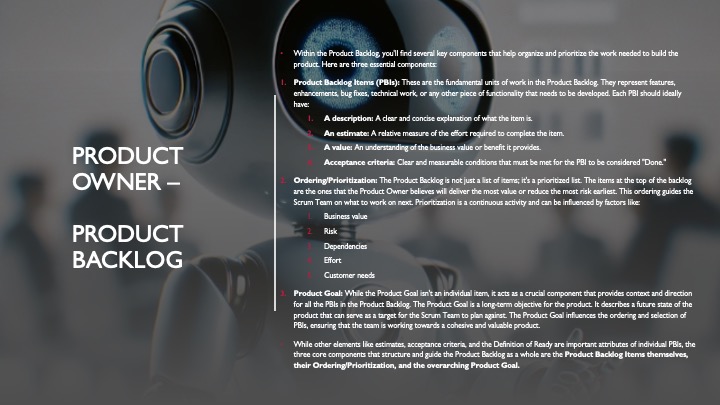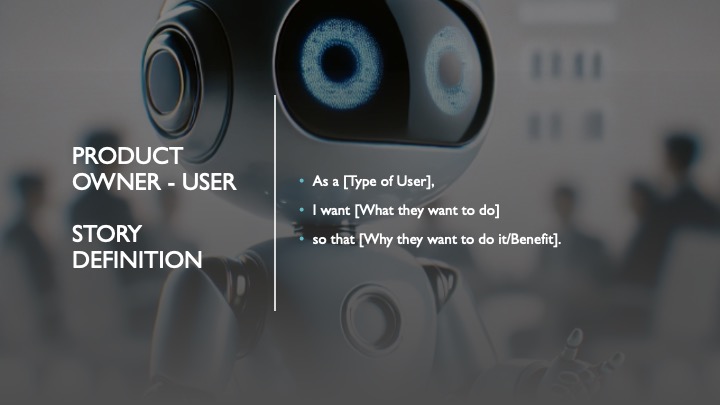The roles and responsibilities of the Product Owner
The Product Backlog
Within the Product Backlog, you’ll find several key components that help organise and prioritise the work needed to build the product. Here are three essential components:
1.Product Backlog Items (PBIs): These are the fundamental units of work in the Product Backlog. They represent features, enhancements, bug fixes, technical work, or any other piece of functionality that needs to be developed. Each PBI should ideally have:
- A description: A clear and concise explanation of what the item is.
- An estimate: A relative measure of the effort required to complete the item.
- A value: An understanding of the business value or benefit it provides.
- Acceptance criteria: Clear and measurable conditions that must be met for the PBI to be considered “Done.”
2.Ordering/Prioritisation: The Product Backlog is not just a list of items; it’s a prioritised list. The items at the top of the backlog are the ones that the Product Owner believes will deliver the most value or reduce the most risk earliest. This ordering guides the Scrum Team on what to work on next. Prioritisation is a continuous activity and can be influenced by factors like:
- Business value
- Risk
- Dependencies
- Effort
- Customer needs
3.Product Goal: While the Product Goal isn’t an individual item, it acts as a crucial component that provides context and direction for all the PBIs in the Product Backlog. The Product Goal is a long-term objective for the product. It describes a future state of the product that can serve as a target for the Scrum Team to plan against. The Product Goal influences the ordering and selection of PBIs, ensuring that the team is working towards a cohesive and valuable product.
While other elements like estimates, acceptance criteria, and the Definition of Ready are important attributes of individual PBIs, the three core components that structure and guide the Product Backlog as a whole are the Product Backlog Items themselves, their Ordering/Prioritisation, and the overarching Product Goal.

Story Definition

Story Definition
- As a club member I should be able to view my billing and payment history, so I know how and when I am being billed.
- As a [Type of User], Club Member
- I want [What they want to do] View my billing and payment history
- so that [Why they want to do it/Benefit]. I know how much and when I am being billed
- •Conditions of satisfaction
- •Acceptance criteria
- •History will only be for one year
Story Point estimation
- Relative Estimation –
- Because – Different skills give different estimates
- Fibonacci Scale – 1, 2, 3, 5, 8, 13 (Cap)
- Exponential Scale – 0, 1, 2, 4, 8, 16,
- T-Shirt
- Extra Small, Small, Medium, Large, Extra Large